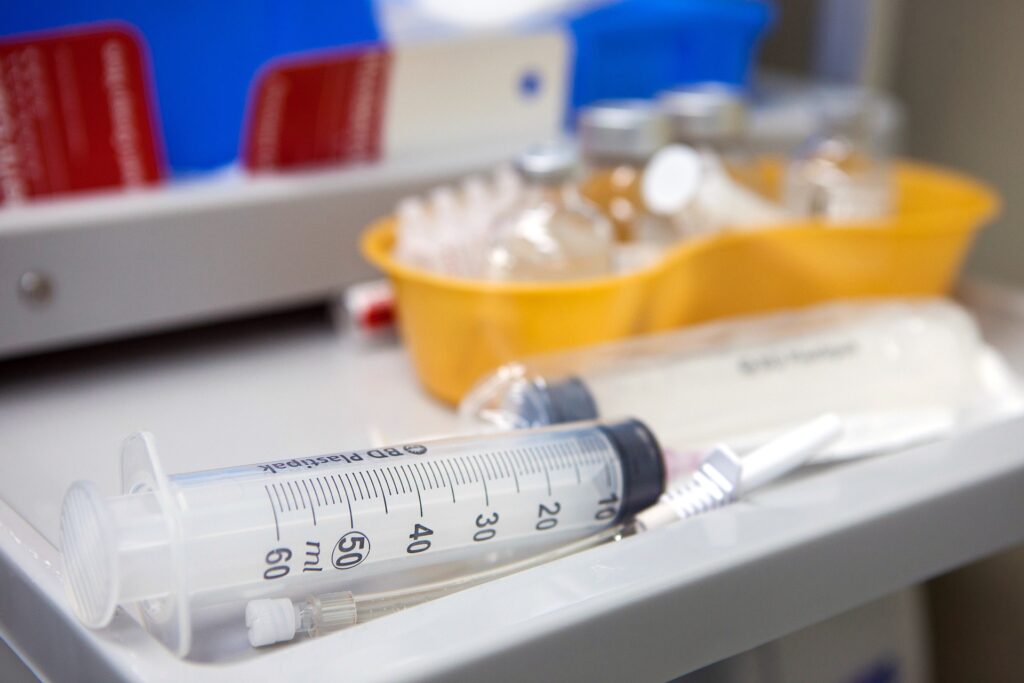Biosimilar drugs – which duplicate the clinical effectiveness of biologics – are a small but growing category of pharmaceutical treatment. While many experts believe biosimilars have the potential to lower drug costs through competitive pressure, adoption has been slower than some expected.
New research sheds light on one aspect of the market: trends in use and reimbursement of infliximab biosimilars, which are approved to treat chronic conditions like Crohn Disease and Rheumatoid Arthritis. The study, which was published in JAMA Internal Medicine, found two years after launch, these biosimilars captured only 10% of the market and lowered reimbursements by 17% – significantly less than an earlier biosimilar.
“There has been some concern that U.S. biologic markets are developing too slowly, with some even arguing it’s time to give up on biosimilars and instead have the government regulate biologic drug prices outright. We’re not ready to give up on competition just yet, but want to understand the barriers that may be slowing biosimilar uptake, and whether alleviating them could lower costs,” said Schaeffer Center Fellow and Executive Director of the Value of Life Sciences Innovation Program at the USC Schaeffer Center Karen Van Nuys.
Prescribing Biosimilars for Acute and Chronic Conditions
The FDA approved the first biosimilar in 2015 – filgrastim – for use in patients who lack certain white blood cells due to complications from chemotherapy. Research published earlier this year by Chen and colleagues showed while there was variation in prescribing across different types of providers, overall adoption grew steadily after its launch.
In contrast to filgrastim, the second and third biosimilars to launch in the U.S. were approved for the treatment of lifetime, chronic conditions like Crohn’s disease, ulcerative colitis, rheumatoid arthritis, and plaque psoriasis. Called Inflectra (infliximab-dyyb) and Renflexis (infliximab-abda), these biosimilars to the brand biologic Remicade (infliximab) were introduced in November 2016.
While biosimilars are as safe and effective as the biologic, physicians and patients have been slow to switch. In particular, they may be more reluctant to switch from a working regimen for patients who are stable on the originator biologic when treating a chronic condition compared to an acute condition, the researchers hypothesized.
“Unlike small molecules, biologics must be grown or produced by living cells. Their complex manufacturing process resulted in the creation of a separate regulatory pathway in 2010 for biosimilar approval. Thus, understanding how biosimilars have fared is key towards identifying what policies, if any, are needed to ensure sufficient competition in a market where the drugs are both incredibly effective and very expensive,” said Schaeffer Center Fellow Alice Chen.
Uptake and Reimbursement of Infliximab
The researchers analyzed quarterly claims data from January 1, 2017, to December 31, 2018, administered in Medicare Part B. Part B covers a variety of outpatient services, including infliximab and other drugs administered in physician’s offices.
According to the study, the biosimilar share of infliximab claims processed increased from 0.5% to 10.5% between January 2017 and December 2018. The researchers estimate that by December 2018, reimbursement for the biosimilars was 17% less than the biologic.
“Though continuing to drop, the price of biosimilar infliximab has fallen at slower rate than biosimilar filgrastim,” explained Chen.
Despite the slower price drop, the researchers find a considerable minority of patients did switch between biologic and biosimilar versions in 2018. All told, 17% of new patients and almost 11% of returning patients used the biosimilar.
Among physicians, just 3.5% prescribed only the biosimilar by the end of 2018. Less than one-quarter of physicians prescribing infliximab prescribed both biologic and biosimilar versions. Of those who prescribed both, 61% switched some patients from the biologic to the biosimilar.
The researchers suggest switching may have been the result of lower patient copays or other financial influences favoring biosimilar use.
Biologic drugs are the fastest-growing category of pharmaceutical spending. Given this, biosimilar drugs — which duplicate the clinical effectiveness of biologics — have the potential to lower prices and produce savings for patients and payers. Yet the biosimilar market overall in the U.S. has been slower to develop than in many European countries.
These findings show that although slower than filgrastim, biosimilar infliximab uptake in the U.S. was similar to that in Europe.
Laura Gascue and Rocio Ribero of the USC Schaeffer Center also co-authored the study. Funding was provided by the Leonard D. Schaeffer Center for Health Policy & Economics and the National Institute on Aging of the National Institutes of Health under award number 3R01AG055401-02S2.
